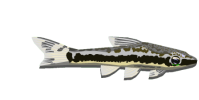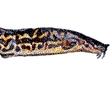I like how I perfectly derailed this topic, but how flappinganimal is still interested.
Yes, funding usually comes from some scientific organization which you apply to. It is a process that is an important part of science, but I'm sure many scientists would prefer not to spend so much time writing grant proposals and just doing science... But to do science you have to have money.
The people on The Lost Land of the Volcano is an organization called Conservation International, if I'm not mistaken. They've got a fair amount of money and they're always looking for new places to find new species and trying to protect as much land as possible for conservation purposes.
Yeah, Zootaxa (
http://www.mapress.com/zootaxa/content.html) that racoll mentioned is a great place for a number of free articles. It's where I first found science. ;) I've only been in grad school a few weeks, though, so I haven't done much in the way of science, yet.
Indeed, I have heard the European structure of education is quite different. On the other hand, what I have heard is that in Europe the PhD education is quite regimented and you are told what to do, while in the US you are free to choose your topic and you have to work largely independently, which probably contributes to the longer time it takes. I'm considering trying to graduate in 3 years, but that's contingent on choosing a thesis topic and then actually doing the research, which has a way of taking more time than expected.






